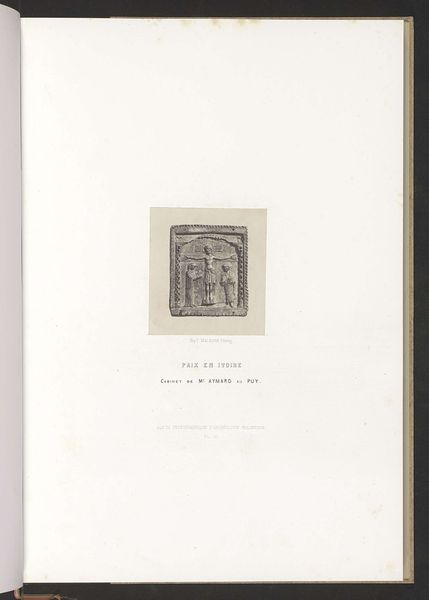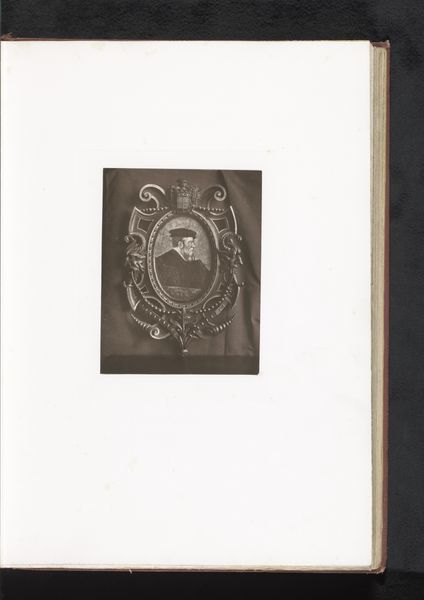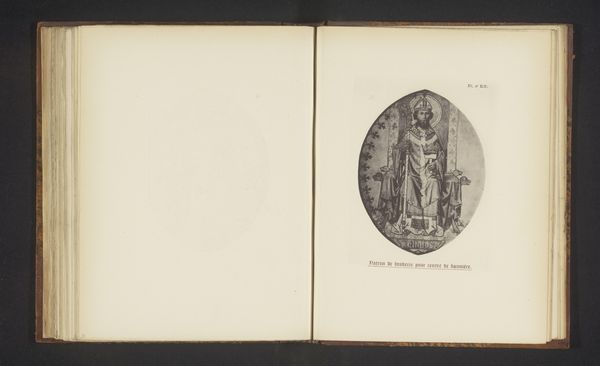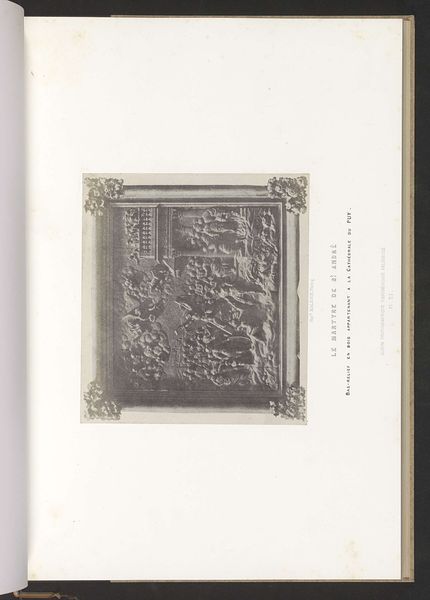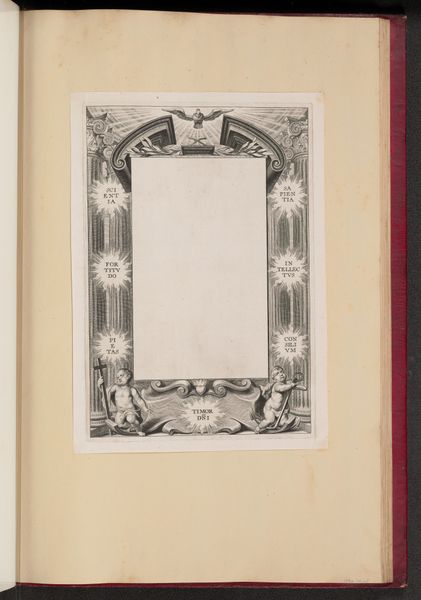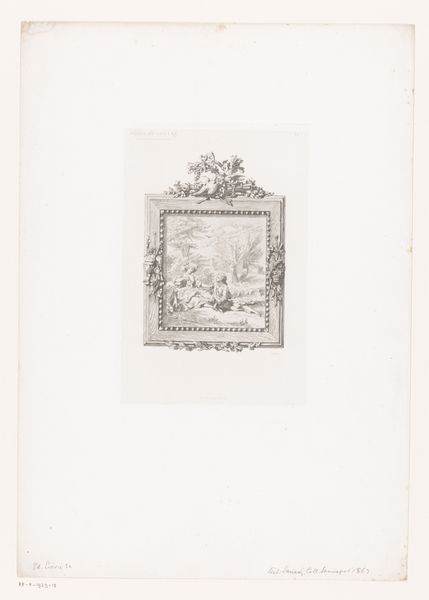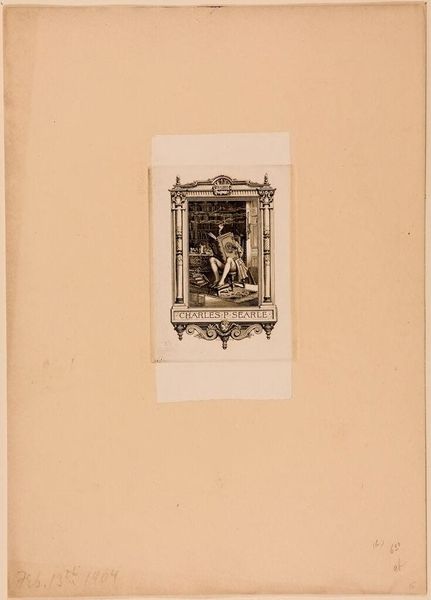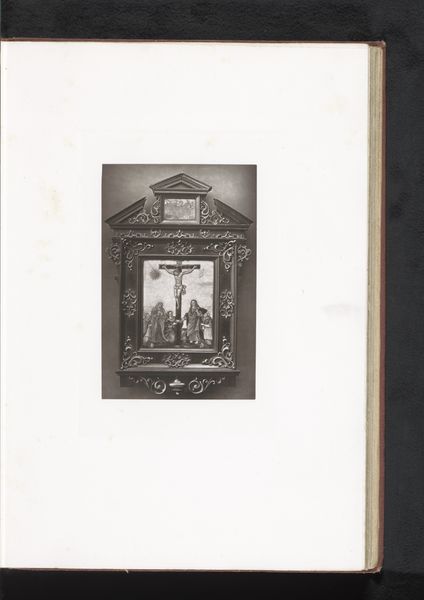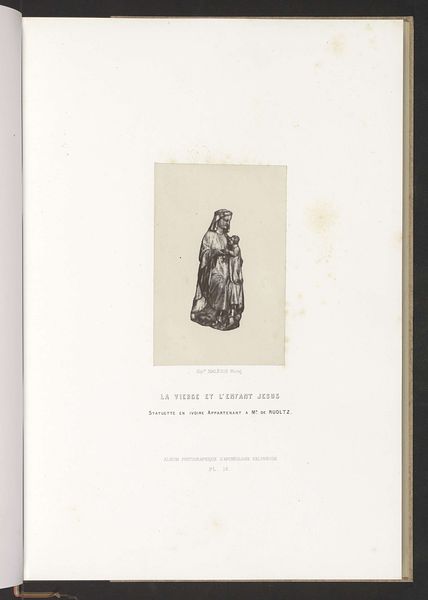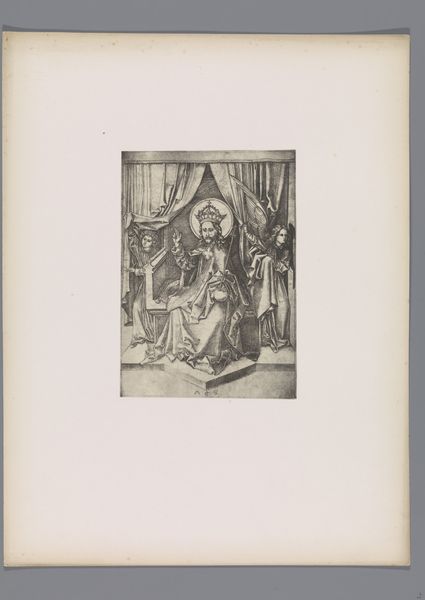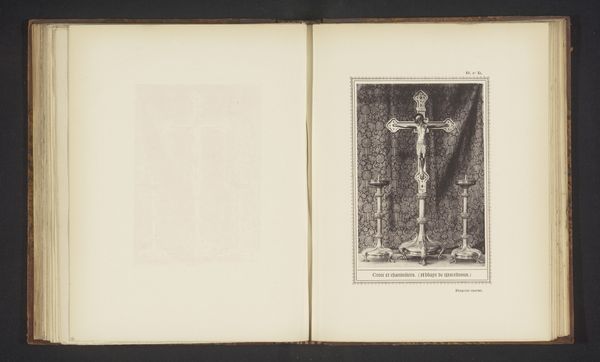
Crucifix in houten omkadering afkomstig van de kathedraal van Le Puy-en-Velay before 1857
0:00
0:00
photography, sculpture, gelatin-silver-print, wood
#
photography
#
sculpture
#
gelatin-silver-print
#
wood
Dimensions: height 188 mm, width 125 mm
Copyright: Rijks Museum: Open Domain
This wooden crucifix, likely crafted in France, perhaps even by Hippolyte Malègue, speaks volumes through its central symbol. The crucified Christ is a potent image, embodying sacrifice and redemption, deeply embedded in the Western psyche. Consider how this motif echoes across time. We see antecedents in ancient sacrificial rituals and hero myths. The outstretched arms, a gesture of surrender, also resonate with images of supplication found in various cultures. Here, they convey intense suffering but also transcendence. Interestingly, the cross itself transforms from a symbol of Roman oppression into an emblem of hope. It is a testament to how cultural memory can invert the meaning of an object, imbuing it with new significance. The emotional power of the image lies in its ability to evoke empathy, engaging viewers on a visceral, subconscious level. The image of the cross, a symbol which has resurfaced, evolved, and taken on new meanings in different historical contexts, continues its cyclical progression.
Comments
No comments
Be the first to comment and join the conversation on the ultimate creative platform.
